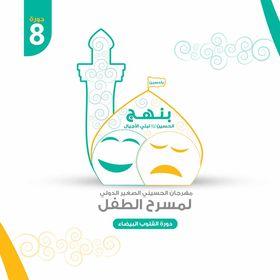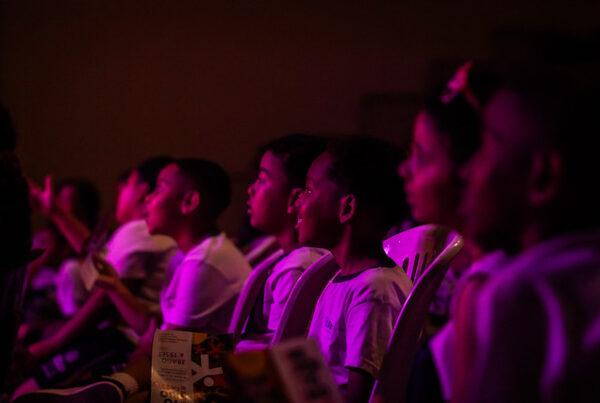ASSITEJ World Day of Theatre for Children is an ASSITEJ campaign, promoted and celebrated through the message ‘Take a Child to the Theatre, Today’.
This focus enables National Centres, individual members, companies, arts organisations, academics, teachers, artists, practitioners and others interested in theatre for young audiences to connect with the idea of world day and ‘make the case’ for children’s entitlement to theatre and the arts.
All ASSITEJ members are invited to promote special world day messages written every year, share the ASSITEJ film and consider additional activity – large or small. Each year ASSITEJ National Centres around the globe deliver activities ranging from conferences, performances, workshops and special media events connected to #takeachildtothetheatre.
- WTD 2020 logos (available in English, French, Portuguese and Spanish)
Download the logos here
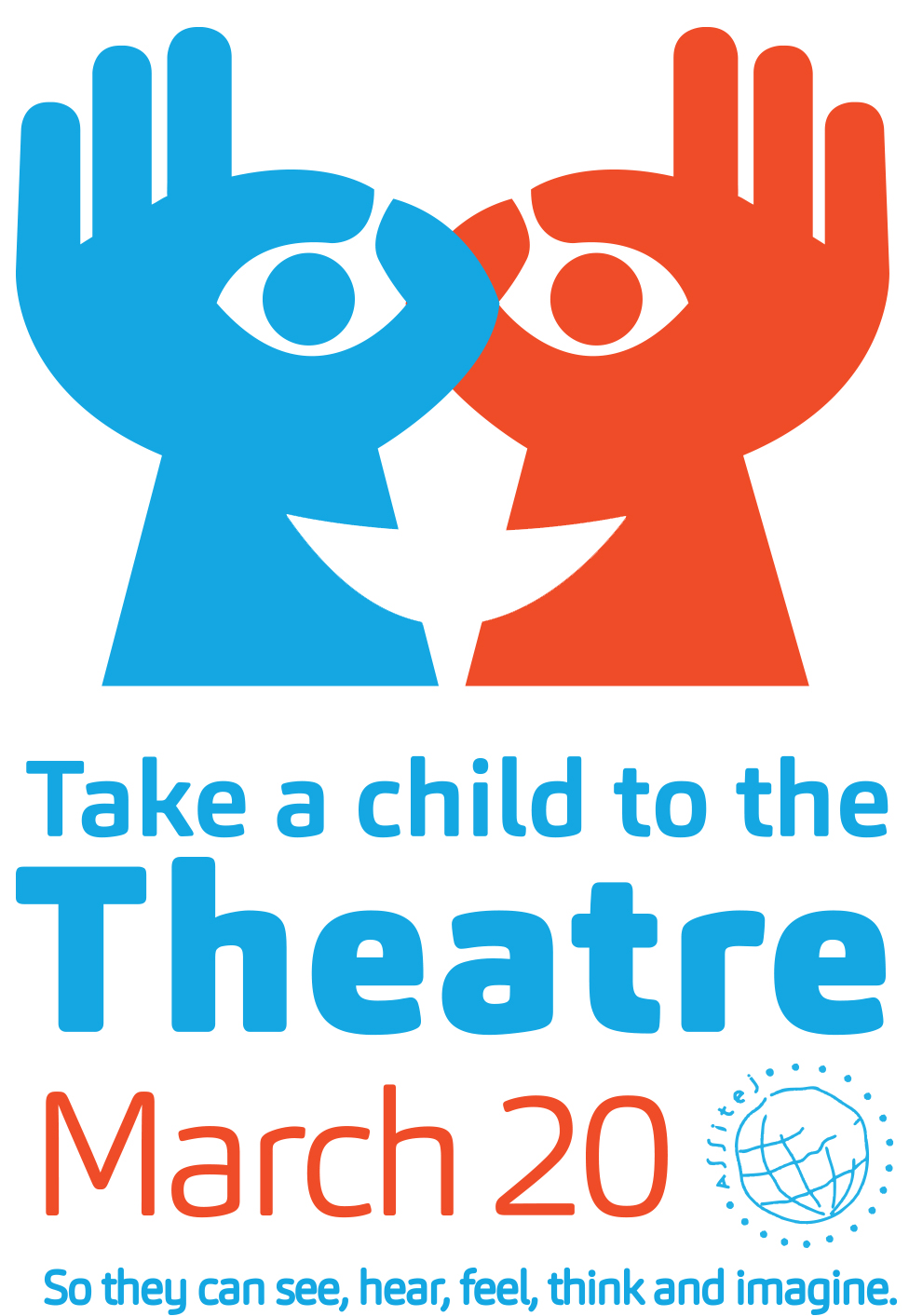 |
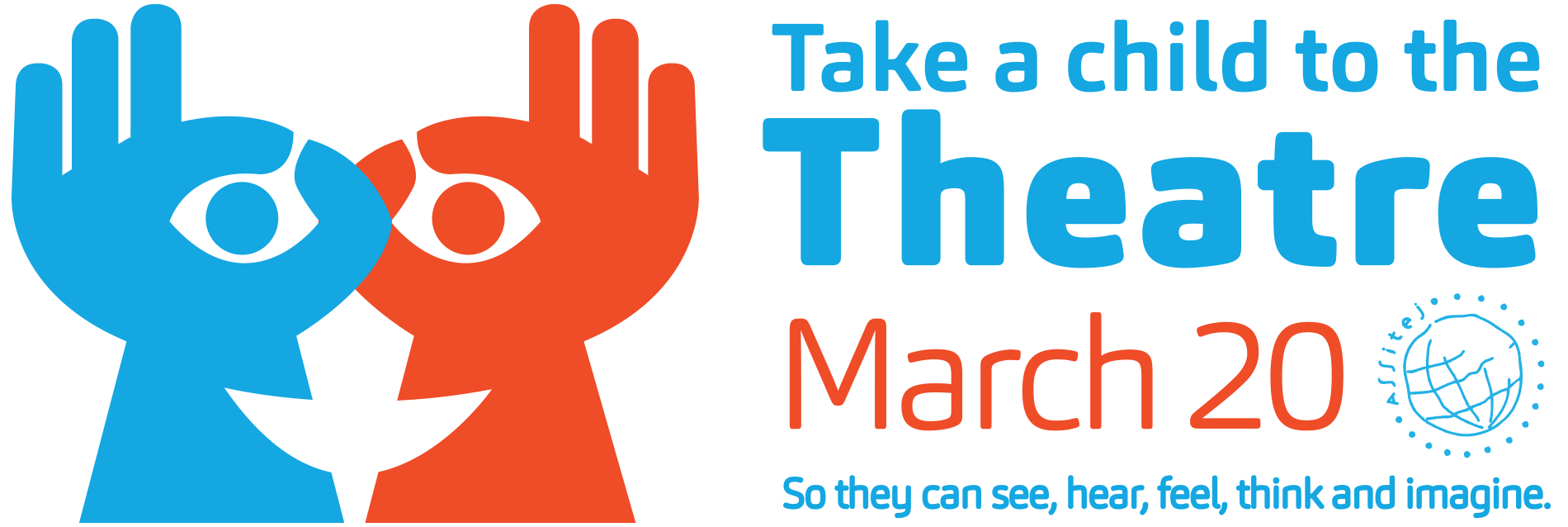 |
- A complete document, including a presentation of WDT campaign and guidelines for the use of the available tools through different occasions and medias can be downloaded here:
Download the toolkit here - The Press Release for 2020 is available here:
Download the press release here
2020 World Day Message from Yvette Hardie
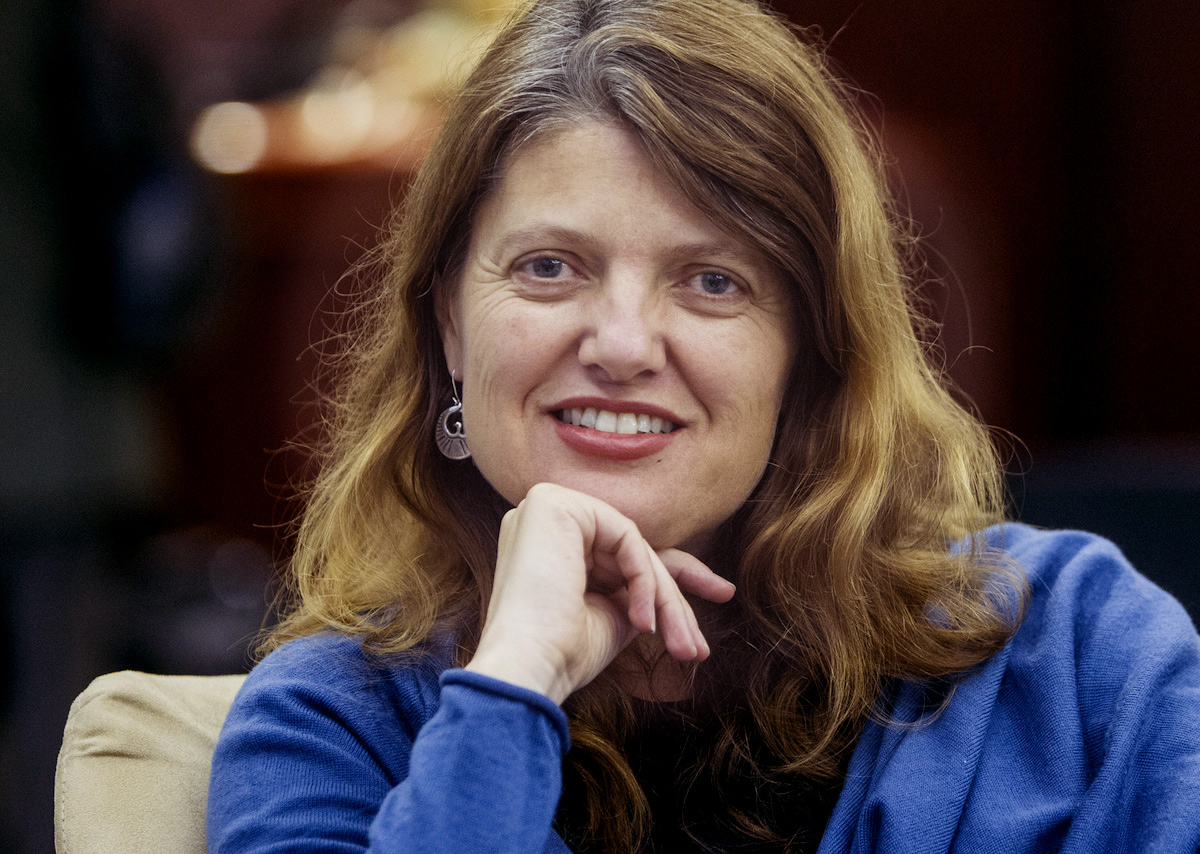
What does it mean for a child to enter into a creative encounter, to be invited in to a new arts experience? Why is this so important for every child?
I had the privilege recently of hearing Yo-Yo Ma, the great cellist, speak and play and he referred to what he calls Cultural hospitality. He sees this as the capacity (and indeed the obligation) of the arts to welcome what is new, innovative and out the box, what is marginalised, unheard, and ignored… In his view, it is our task as artists to be hospitable to these voices, forms and techniques, and in the process to allow ourselves to be changed.
It reminded me of what it means to be a host and what it means to be a guest. And one of the most important elements on both sides is the quality of listening, of willingness to step outside of what is known and comfortable, and to embrace and celebrate difference.
The great host is the one who makes everyone feel at home, regardless of where they come from or what their experiences might be. It is the one who puts their ego aside out of genuine interest in this person who has come to visit. It is the one who wants to give everyone the best possible experience. The great guest is the one who comes with boundless curiosity to the encounter, wanting to learn about the other, not afraid to try something new.
In this space of mutual receptivity, we find connection, we find surprise and we find deep learning. We leave these encounters changed. We have touched what makes us human, in ourselves and in others…
This is the precious moment the arts give us. As theatre artists we need to find ways to invite children and young people into these encounters with a generous spirit, desiring to listen to the audience as much as we want them to listen to us.
And when this happens, then we feel the connection start to grow… we find common ground, we see the big picture, we have flashes of insight and we feel that flush of shared feeling we call empathy. We have a sense that we matter, that others matter, that what we are exploring together, matters.
In this age where more and more people are being shunned, turned away at borders and airports, rejected because they come from a different class, ethnicity, language group or religion, it is the artist who has the capacity to provide a sense of belonging, of connection.
And every child needs that.
YOSHI OIDA’S MESSAGE FOR THE WORLD DAY OF THEATRE FOR CHILDREN AND YOUNG PEOPLE

“Since I was born, I grew up mimicking my parents all the time. How to walk, how to eat, and how to talk; I learned all of these from mimicking my parents. Then from when I became old enough to understand things, taken by parents, I learned to go to the theatre. Theatre was for me, the magic country. The first thing you saw when you entered the theatre was a dropped curtain. I remember that I waited for the curtain to rise with a huge expectation wondering what was behind that dropped curtain. When the curtain finally opened, there was a dream world created by a stage set, lighting, and costumes. Sometimes, it was something created just like in the real world, and at other times, it was a landscape impossible in the real world. There were performers in various disguises crying, laughing, singing, and dancing. And during the interval, we were able to hear sounds of banging and clattering. If it was a small theatre, and I was sitting in the front row, I was able to pull up the curtain to peek inside. Surprisingly enough, a scene was being changed in an instant by a big stage set which was turned around and pulled backwards. Then, afterwards at home, I would mimic the actor. My favorite was a samurai role. I drew on manly eyebrows, made a wig, and played swordfights with my friends using bamboo swords. By the time I was a 7th grader, I started making scale models of a stage set; a revolving stage, a stage set with lights made of miniature light bulbs…. And of course, I attempted scene changes with it.
Having escalated from these experiences, eventually I entered a professional theatre company. But at that time, there was no school for contemporary theatre. I went to a master of conventional theatre and learned theatre techniques conventionally handed down. To learn the conventional theatre means to mimic everything that the master does and to make an effort to be exactly like the master. Then one day, I unexpectedly earned a chance to do a work under Peter Brook. The first lesson I had with him was in improvisation, which I had never experienced. Even though I was told to do improvisation, I had no idea what to do, so I started making movements combining all the conventional ones that I had learned in Japan. But one day, Brook gave me a note saying, “Don’t mimic the Japanese conventional theatre”. Struck by his note, I felt as if I had been thrown alone into the great ocean. I had nothing to depend on and was like a wrecked ship simply drifting here and there. But this was the moment when I started to think about creating for the first time. I realised that my work was not simply to reproduce what existed in the past in the way the conventional theatre does, but to create my own expressions. And to create is not to create something from nothing as God does, but to mimic what has previously existed and go beyond it. Van Gogh was influenced by Ukiyoe, Picasso created his own paintings inspired by African arts, and Miro got suggestions from the Chinese characters; all has been developed from what has already existed.
The path I have taken is probably the same. My life was to mimic whatever I saw and heard in theatre and then to make efforts to go beyond that. And this experience has led me to find a way of living, passing through and beyond theatre.”
Yoshi Oida
Actor, Director, and Writer. Born in Hyogo Prefecture in 1933. He currently resides in Paris, France. He started his career as an actor at Bungakuza and at Shiki Theatre Company. Since 1970 he worked with Peter Brook at CIRT (International Centre for Theatre Research). He has acted in Mahabarhata, Tempest, and The Man Who, directed by Peter Brook, Shunkin, directed by Simon McBurney and many more. He has also directed a number of plays and operas. The book “An Actor Adrift” which he wrote published in 1989 has been translated into 17 languages and treated as “actor’s bible” in all over the world. He has received the following honors from the French Government; Chevalier de l’Ordre des Arts et des Lettres, France (1992), Officier de l’Ordre des Arts et des Lettres, France (2007), and Commandeur de l’Ordre des Arts et Lettres, France (2013).
ASSITEJ Fundraising campaign
Some countries use the campaign as a rallying call to ask for donations to ensure that children and young people who otherwise wouldn’t have access to theatre get an opportunity to do so on this day.
Last year ASSITEJ Italy raised 1400 euros from the campaign, through asking audiences to add a small donation to their ticket price. The money was collected and then donated to Jacaranda Theatre Arts Festival Festival in Zambia, and to SAFE (Southern African Festival for Children and Young People) in Zimbabwe, to aid
audience access to these events. The determination for the funding was made by ASSITEJ Executive Committee after an open call.
Should you wish to contribute in this way, please contact the Secretary-General of ASSITEJ.
We hope that as many members as possible will get behind the campaign for 2020 so that we can make as big an impact as possible which supports the rights of children and young people to engage with theatre.
World Day Video
Every year we do an open call for a company or an organization to create a video that celebrates the Take a child to the theatre message with their personal vision. In 2020, the video has been kindly provided by CBTIJ – ASSITEJ Brazil.
This will be promoted on the ASSITEJ International Website and through social media. We urge you to watch and share the video.
Members are invited to create their own short videos and digital media using the languages of their country or region. ASSITEJ International will then share these with the rest of the Membership.
International Co-operation
World Performance Week is a concept initiated by ASSITEJ International, in collaboration
with other international associations involved with different art forms related to live performance, which celebrate their World Days between March 20th and March 27th.
We invite you to build partnerships with these associations in your own country and to participate in World Performance Week where this is possible. The week includes March 20th, ASSITEJ World Day of theatre for children and young people (and the campaign “Take a child to the theatre”), March 21st, UNIMA’s World Puppetry Day, March 22nd, World Mime Organisation’s World Mime Day, and March 27th, ITI’s World Theatre Day, which is also celebrated by other associations, such as IATC, IDEA, AITA/IATA and others. Use the unifying logo, as well as the ASSITEJ International logo and the Take a Child to the Theatre Today logo, if you wish to promote the week.


